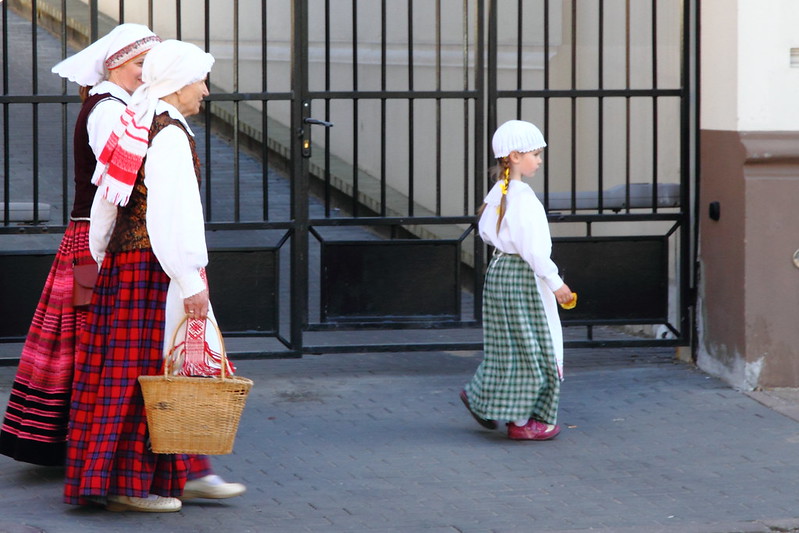Women’s Rights and Gender Equality in Lithuania
 The principle of equal opportunity and equal treatment has been held since 1992, but recent years have marked a period of change in gender equality initiatives in Lithuania. Before then, few movements or government legislations existed that encouraged great institutional change in gender equality, particularly in industries such as science and research.
The principle of equal opportunity and equal treatment has been held since 1992, but recent years have marked a period of change in gender equality initiatives in Lithuania. Before then, few movements or government legislations existed that encouraged great institutional change in gender equality, particularly in industries such as science and research.
Governmental Gender Equality Initiatives
The Ministry of Social Security and Labour is in charge of equality policy in Lithuania and ensuring that their strategies are effectively implemented. In 2021, this government group took on responsibility for ensuring gender equality as a core value in the work of the nation’s central government. The ministry also had an internal structure named the Equal Opportunities and Equality between Women and Men Group, which oversees government policy on anti-discrimination and gender equality. This group has eight employees, two of whom work strictly on gender-based issues.
Initiatives in the Workplace
In 2016, the Ministry of Social Security and Labour implemented the initiative “Municipal Success Code- Gender Equality.” This project aims to reduce gender disparities regarding both the right to work and rights at work by purposely targeting issues such as the wage gap between genders and public education on the impacts of this inequality. This project ran until December 2019.
This program tackled the gender pay gap in municipalities by raising public awareness, identifying factors that determine equality and developing targeted solutions. Consequently, in 2017, a list of gender-based inequality indicators was compiled, encompassing nine key factors: “demography, knowledge, participation in the labor market, access to social services, economic power (resources), authorities and decision-making, health and health services, domestic violence and time.” This list of specifics meant that the correct targeted measures could be issued to the appropriate people and areas.
Lithuania’s movements towards women’s rights in the workplace have made an impact. The percentage of unemployed females (5.5%) stands slightly lower than the unemployment rate of men, which is currently at 7%. However, there is still progress to be made in this sector, as the proportion of females spending time on unpaid chores remains at 18.7%, which is notably higher than the male figure of 9%.
Women’s NGOs in Lithuania
“According to data from the Lithuania’s Women’s Information Centre, there were 63 women’s NGOs in existence on 1 January 1999.” Although there is no “umbrella term” involving all organizations for women in Lithuania, the Lithuanian Women’s Association embraces 12 member organizations. Additionally, 18 women’s organizations are involved in this association’s coordination council and the Women’s Information Centre was founded as a mediator for all the organizations in the nation. This has been monumental for women’s rights.
For instance, these initiatives sped up the implementation of the Law on Equal Opportunities, which benefits women’s rights in the opportunity to and ability to engage in public life. Additionally, it focuses on improving sectors such as transport and infrastructure. Another significant example was their cooperation to engage in protests against “quotas established for men during the entrance examinations at the Kaunas Institute of Technology in 1998.” These quotas were put in place by the university itself, demonstrating the severity of institutional gender bias. This powerful initiative meant that these quotas were soon abolished.
Initiatives Against Violence Against Women
Violence against women is a serious problem in Lithuania. The 2014 European Union Agency for Fundamental Rights survey data results demonstrated that, since the age of 15, 31% of women in Lithuania have experienced physical and/or sexual violence. The Network of Specialized Assistance Centres was set up by NGOs and has been in place since 2012. This initiative set up centers to support victims of violence, educate them on how and where they can receive this aid and help in restoring interpersonal relationships with family members.
Further, in 2012, the Lithuanian government initiated an Inter-Institutional action plan focused on crime prevention and the control of violence, with a particular emphasis on violence against women. In 2015, more than 8,000 women received assistance through these centers. Lithuania currently operates 17 specialized support centers to aid women who are victims of domestic violence.
Looking Ahead
Thanks to these efforts, Lithuania ranks ninth globally for gender equality, as reported by the World Economic Forum’s Global Gender Gap Report for 2023. Elements of gender equality can be seen in the social aspects of everyday life in Lithuania. For instance, the literacy rate of males and females aged 15 and above stands at 99.8%. With the ongoing support of the Lithuanian government, the fight for gender equality is certainly progressing in the right direction and can be expected to strengthen even further.
– Eva McMonigle
Photo: Flickr
